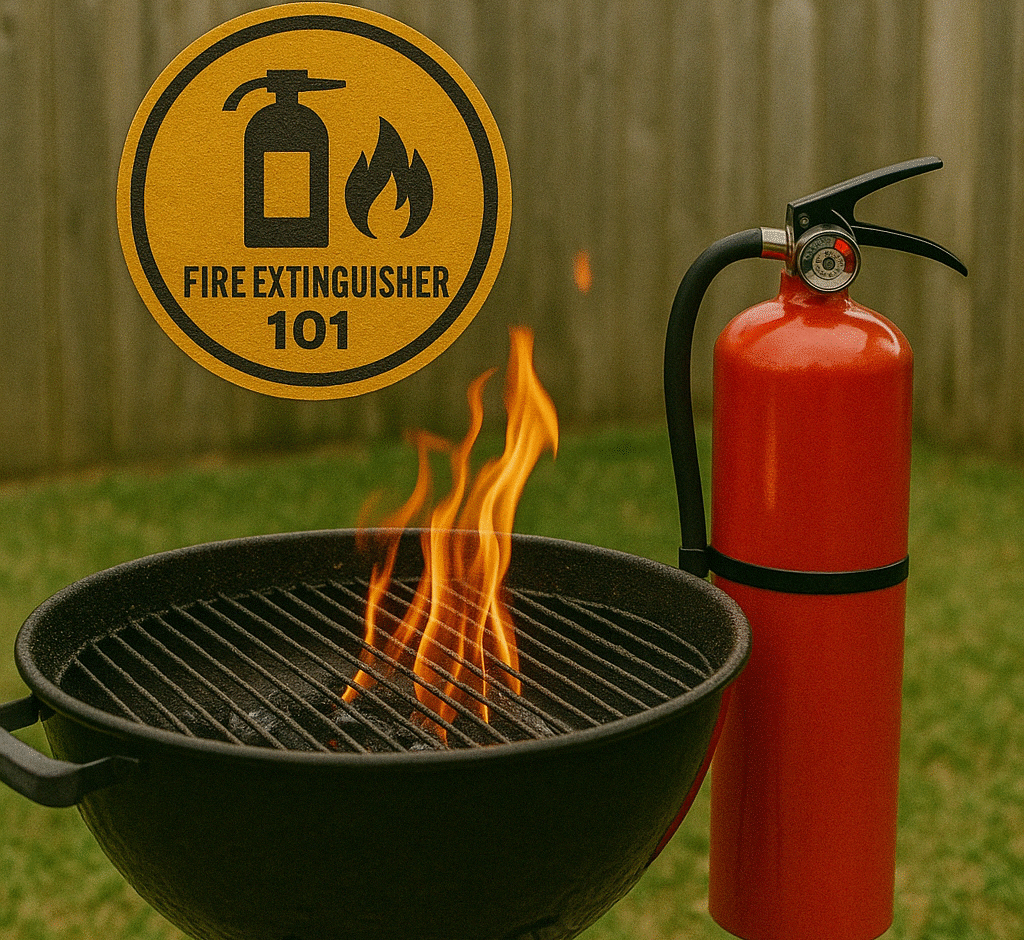
Every grill master needs more than tongs and rubs — they need the right fire extinguisher. Learn what type to buy, where to store it, and how to use it when seconds count.
You Might Never Need It — But You’ll Be Grateful If You Do
Grilling is all fun and flavor… until something goes wrong. Whether it’s a grease fire, a knocked-over grill, or a spark near the deck, things can escalate fast. Having a fire extinguisher within reach isn’t just smart — it’s essential. It could be the difference between a minor scare and a full-on emergency.
Let’s break down the types of fire extinguishers, where to keep them, and how to actually use one without panicking.
The Right Kind of Extinguisher for the Grill
Not all extinguishers are created equal. You need one that can handle grease fires, gas fires, and electrical sparks — all possible at the grill.
Look for a multi-purpose (ABC-rated) or BC-rated extinguisher. Here’s the breakdown:
- Class A – for paper, wood, and general combustibles
- Class B – for flammable liquids like grease, oil, gasoline
- Class C – for electrical fires
For grilling, you want at least a Class B or ABC unit. A 5-pound model is typically the right size — small enough to handle easily, but big enough to stop a fire fast
Where to Keep It (And Where Not To)
You want your extinguisher close… but not too close.
Best spots:
- 5–10 feet from the grill
- Near the patio door or garage entrance
- Mounted on a fence post or wall
- Inside an outdoor cabinet (as long as it’s dry and easily accessible)
Avoid:
- Storing it directly under or behind the grill
- Keeping it in the kitchen if you’re grilling outside
- Leaving it where kids can reach it unsupervised
Make sure everyone in the house knows where it is and how to grab it quickly.
How to Use a Fire Extinguisher: The PASS Method
When flames erupt, adrenaline kicks in — and memory sometimes goes out the window. That’s why the PASS method is easy to remember:
Pull the pin
Aim low, at the base of the fire
Squeeze the handle
Sweep from side to side
Keep spraying until the fire is fully out. If it reignites or spreads, call 911 immediately and evacuate.
Check It, Don’t Forget It
A fire extinguisher isn’t set-it-and-forget-it gear. Check it once a month by:
- Looking at the pressure gauge (needle should be in the green)
- Making sure the pin and tamper seal are intact
- Checking for rust or corrosion
- Wiping off dust or grease buildup
Most extinguishers have a shelf life of 5 to 15 years, depending on the model. Mark the expiration date and replace it when needed.
A Backup You Should Also Keep Nearby
While a fire extinguisher is your main defense, it’s a good idea to also have:
- A box of baking soda for small grease fires
- A metal lid or pan to smother flames
- A water spray bottle (for flare-ups on charcoal only — never for grease or gas fires)
These are fast, effective backups — especially for minor flare-ups that don’t need a full discharge.
Protect the Food — and the People
You might not think about fire extinguishers when you’re seasoning ribs or flipping burgers, but it’s part of the gear every serious BBQ’er needs. Fire safety doesn’t just save your house — it saves the party, the guests, and your reputation as the neighborhood pitmaster.
